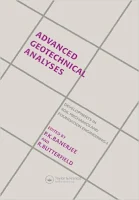From Calculus to Analysis
Steen Pedersen ...
342 pages - Publisher: Springer; 2015 edition (2015)
Language: English - ISBN-10: 3319136402 - ISBN-13: 978-3319136400
 This textbook features applications including a proof of the Fundamental
Theorem of Algebra, space filling curves, and the theory of irrational
numbers. In addition to the standard results of advanced calculus, the
book contains several interesting applications of these results. The
text is intended to form a bridge between calculus and analysis. It is
based on the authors lecture notes used and revised nearly every year
over the last decade. The book contains numerous illustrations and cross
references throughout, as well as exercises with solutions at the end
of each section.
This textbook features applications including a proof of the Fundamental
Theorem of Algebra, space filling curves, and the theory of irrational
numbers. In addition to the standard results of advanced calculus, the
book contains several interesting applications of these results. The
text is intended to form a bridge between calculus and analysis. It is
based on the authors lecture notes used and revised nearly every year
over the last decade. The book contains numerous illustrations and cross
references throughout, as well as exercises with solutions at the end
of each section.
342 pages - Publisher: Springer; 2015 edition (2015)
Language: English - ISBN-10: 3319136402 - ISBN-13: 978-3319136400
 This textbook features applications including a proof of the Fundamental
Theorem of Algebra, space filling curves, and the theory of irrational
numbers. In addition to the standard results of advanced calculus, the
book contains several interesting applications of these results. The
text is intended to form a bridge between calculus and analysis. It is
based on the authors lecture notes used and revised nearly every year
over the last decade. The book contains numerous illustrations and cross
references throughout, as well as exercises with solutions at the end
of each section.
This textbook features applications including a proof of the Fundamental
Theorem of Algebra, space filling curves, and the theory of irrational
numbers. In addition to the standard results of advanced calculus, the
book contains several interesting applications of these results. The
text is intended to form a bridge between calculus and analysis. It is
based on the authors lecture notes used and revised nearly every year
over the last decade. The book contains numerous illustrations and cross
references throughout, as well as exercises with solutions at the end
of each section.






